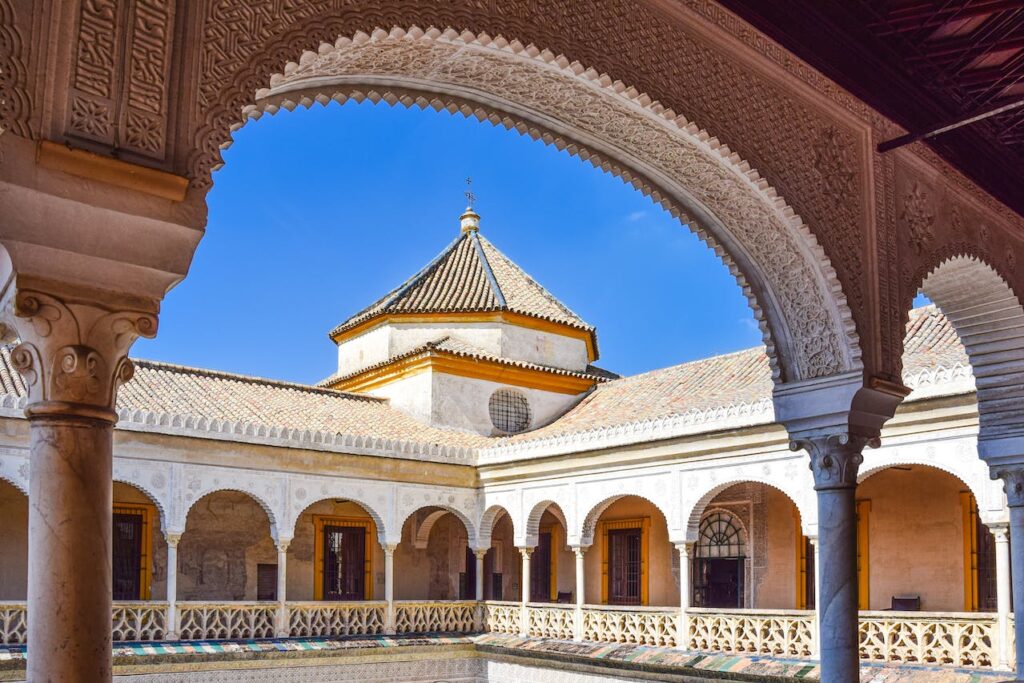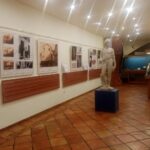Nestled along the eastern coast of Spain, Oliva stands as a testament to the enduring legacy of Moorish influence in the Iberian Peninsula. With a history that dates back to the 8th century, the town’s architecture offers a visual narrative of the past, an intertwining of Islamic artistry and European tradition. This exploration through the streets of Oliva uncovers the profound impact of Moorish culture on its architecture, a story etched into the very stones and alleyways of this picturesque locale.
A Moorish Foundation
The Moors, a Muslim people from North Africa, crossed into Spain and over several centuries, laid the groundwork for a significant period of architectural and cultural flourish. In Oliva, their legacy is most palpable in the town’s historic center. The labyrinthine layout of the old quarter, known as “El Raval,” mirrors the Moorish style of narrow, winding streets designed to provide shade and cool air in the scorching heat of the Mediterranean sun.
Moorish Aesthetics and Functionality
Oliva’s architecture is a showcase of the fusion between Moorish aesthetics and the necessity of defense, which characterized much of medieval architecture. The town’s most significant relic of Moorish fortification is the remnants of the Castle of Santa Anna. Though now a ruin, the castle’s location on a strategic vantage point illustrates the Moors’ mastery in military architecture. The surviving structures hint at the once imposing walls and towers that exemplified Moorish designs – emphasizing strength, durability, and beauty.
Architectural Hallmarks
The Islamic rule has left behind distinct architectural hallmarks. The horseshoe arches and intricately carved woodwork in some of Oliva’s older buildings reflect the Moors’ craftsmanship and their penchant for detailed, geometric patterns, which eschewed the depiction of human and animal forms in favor of calligraphy, vegetal, and abstract designs. This decoration style, known as arabesque, creates an illusion of infinite repetition, which is symbolic of the infinite nature of creation.

Domestic Architecture
Moorish culture also shines through in the domestic architecture of Oliva. Traditional homes bear the influence of Islamic domestic privacy concepts, with interior courtyards (patios) that serve as the heart of the household, hidden from the public eye. These courtyards, often adorned with a central fountain, were places of serenity and cool refuge. The zellige tilework, although more associated with Morocco, can sometimes be found adding color and artistic flair to these private spaces in Oliva.
The Influence on Religious Structures
After the Reconquista, when Christian forces reclaimed Spain, many Moorish structures were converted to Christian uses or incorporated into new buildings. In Oliva, this can be seen in the town’s churches, which were often built on the site of former mosques. The Church of Santa Maria, for example, showcases a Gothic style that is mixed with Mudéjar artistry, a Muslim architectural style under Christian rule. The blending of pointed arches with the remains of Moorish ornamentation in these religious structures reveals a layering of cultures unique to this region of Spain.
Water Systems
Another profound influence is seen in Oliva’s historical water systems. The Moors were masters of irrigation, bringing their knowledge of sophisticated hydraulic systems from the Middle East to manage the scarce water resources of the region. The remnants of these systems, including ancient acequias (water channels), still crisscross Oliva’s landscape, a testament to the enduring practicality of Moorish engineering.
Preservation and Continuity
The modern efforts to preserve Oliva’s Moorish heritage are not just about maintaining old stones but keeping alive the dialogue between past and present. Restoration projects aim to protect and celebrate these architectural wonders, ensuring that the town retains its unique character and that the story of its Moorish past continues to be told.

Conclusion
Oliva is a living museum, a space where the echoes of Moorish chants mingle with the tolling of church bells. The architecture of this coastal town is more than a mere attraction; it is a chronicle of the cultural symbiosis that defines not only the town itself but also the broader narrative of the Valencian region. The Moorish culture, though physically absent for centuries, continues to cast its shadow through the silent yet eloquent language of Oliva’s architecture, a reminder of a bygone era that shaped the very soul of this Spanish gem.





